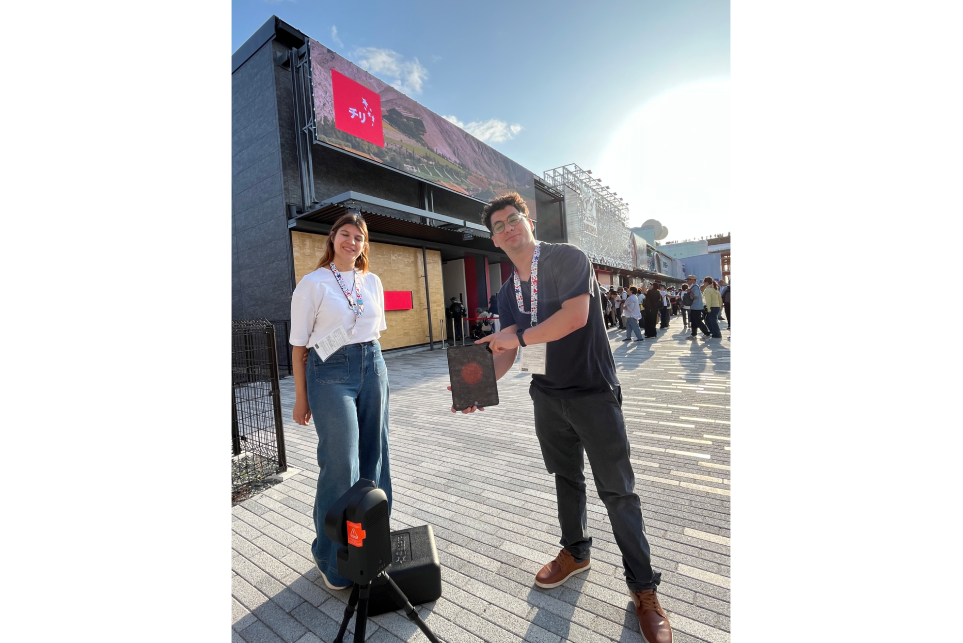
The Chilean pavilion at the World Expo seeks to highlight the country's leadership in astronomy, combining science, art, and technology with academic activities and other events aimed at the general public.
As part of Chile's participation in the Osaka 2025 World Expo, the Chilean pavilion inaugurated the second themed week of the program calendar, corresponding to Astronomy Week, which took place between May 19 and 25.
Under the slogan “Infinite Innovation: Exploring the Limits of the Universe and Creativity,” this week sought to position Chile as a world leader in astronomical research, as well as to bring people closer to astronomy through cultural and artistic representations in fields such as music, theater, and the visual arts.
The aim of this themed week was to highlight the exceptional quality of Chile's skies, recognized as the clearest and most pristine on the planet, and the leading role the country plays in observing the universe.
Chile is projected to host more than 50% of the world's astronomical capacity by 2030, with observatories such as ALMA, Paranal, La Silla, Vera C. Rubin, and the University of Tokyo's TAO project, located on Cerro Chajnantor in the Atacama Desert at an altitude of 5,640 meters, which is the highest altitude observatory in the world.
"Astronomy is one of the most powerful expressions of Chile's ability to generate cutting-edge knowledge. From the Atacama Desert, our observatories not only explore the universe, but also drive advances in artificial intelligence, medicine, communications, and sustainability. This week in Osaka has been an opportunity to show the world how Chile observes the stars to transform life on Earth and how Chilean astronomy contributes to addressing global challenges such as climate change, in line with the Expo's theme (Designing the Future Society for Our Lives) and the ‘Saving Lives’ sector, where the Chilean pavilion is located," said Paulina Nazal, Chile's General Commissioner for Expo Osaka 2025.
The Astronomy Week program included a series of activities aimed at bringing Chilean astronomy closer to the Japanese and international public.
For example, the scientific infrastructure has enabled the development of an active and globally recognized astronomical community. Eight scientists from the Center for Astrophysics and Related Technologies (CATA) and the Department of Astronomy at the University of Chile were part of the official delegation, participating in panels and talks on astrophysics, astronomical instrumentation, technology transfer, innovation, and the social impact of astronomical knowledge.
In addition, observations were made with solar telescopes, audiovisual projections, and interactive experiences that allowed visitors to explore the southern sky from Japan. Among these was the ALeRCE project, an innovative Chilean project that uses artificial intelligence to detect and classify transient astronomical phenomena, such as supernovae, in real time from millions of alerts from different observatories, positioning Chile at the forefront of data astronomy.
Cultural activities
Another important aspect is how astronomy and the exploration of the cosmos connect with different artistic expressions. To this end, three important national figures were presented at Expo Osaka.
The first is renowned visual artist Iván Navarro, whose light installations explore the relationship between time, space, and perception. In his work “Celestialand,” which was presented digitally, Navarro fused the coldness of mirrors, neon lights, and icy LEDs with warm eruptions of color to replicate the abstract and chimerical formations of celestial phenomena.
Also participating was the young Chilean musician Flangr, who fuses real sounds from space captured by the ALMA observatory with electronic music in a project he calls “astro pop.” This is the second time this band has performed at a World Expo, following Expo 2020 Dubai.
In addition, the Tryo Teatro Banda company presented the play “Foster,” which tells the story of the Foster Astronomical Observatory, a landmark of Chilean science located on Cerro San Cristóbal in Santiago.